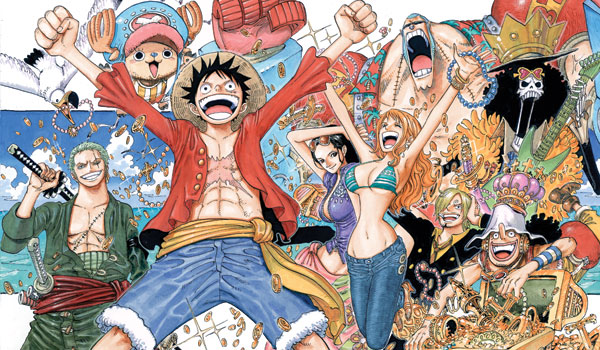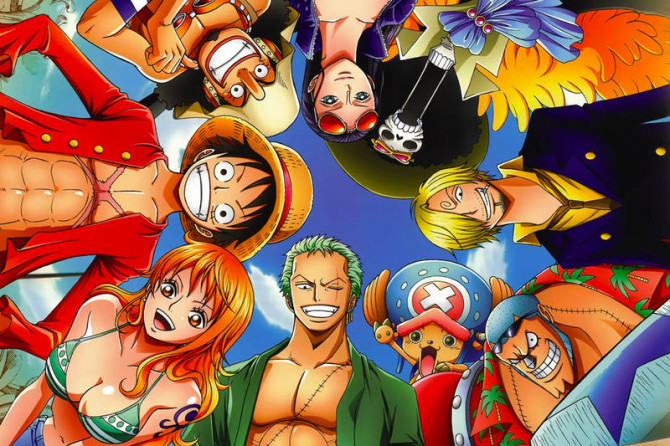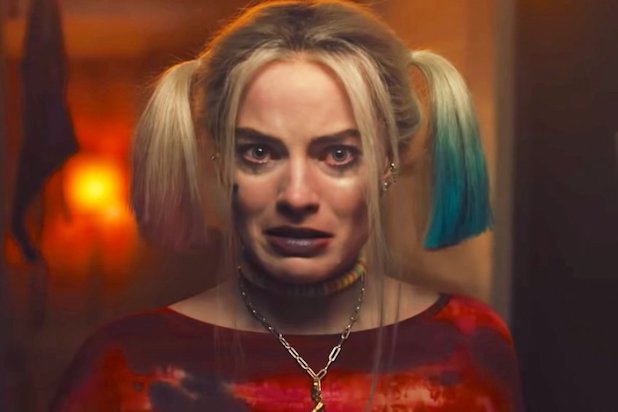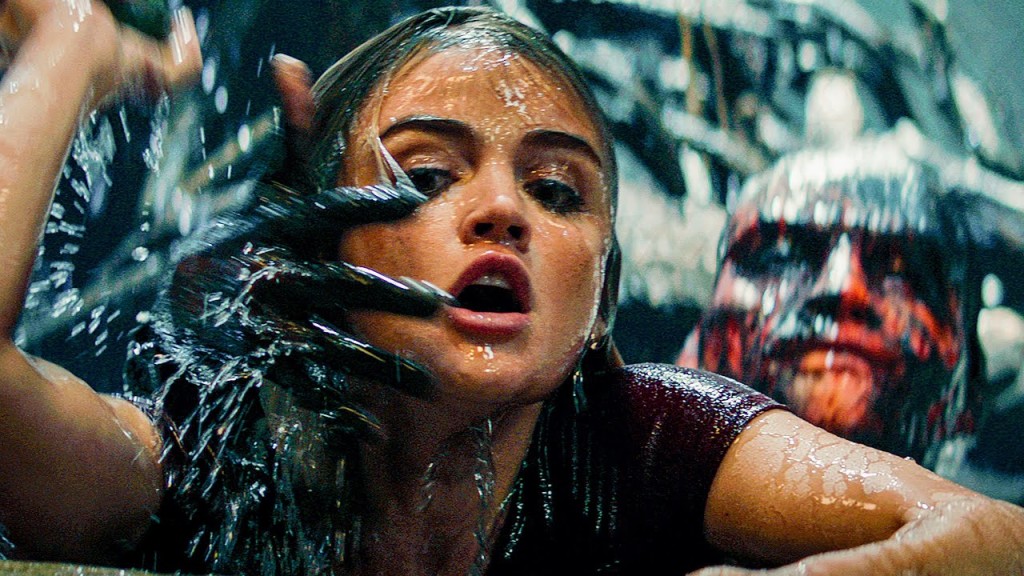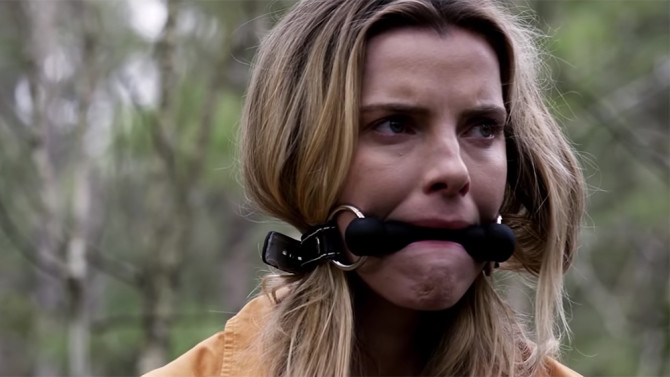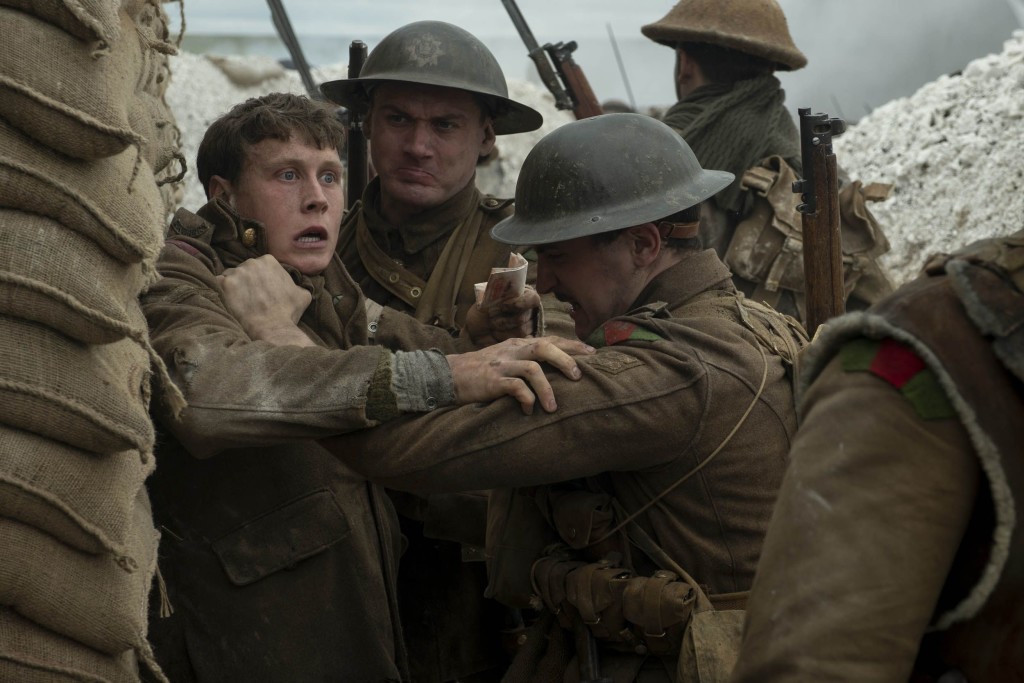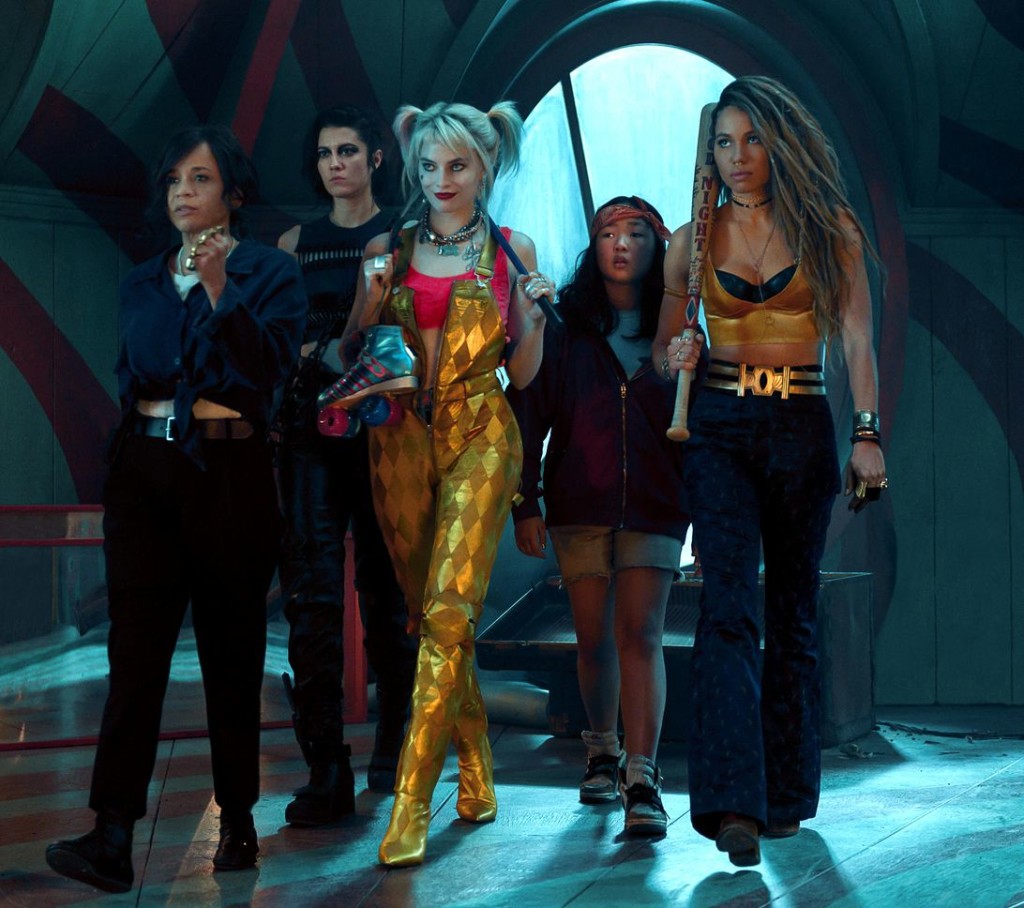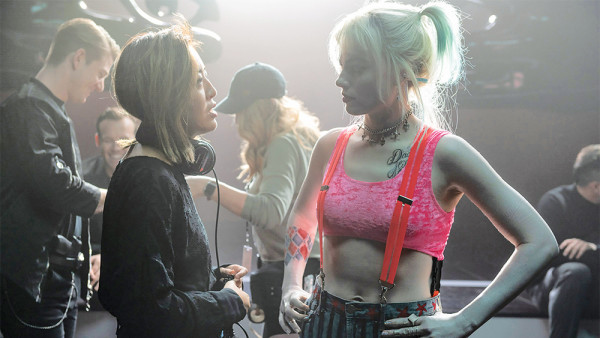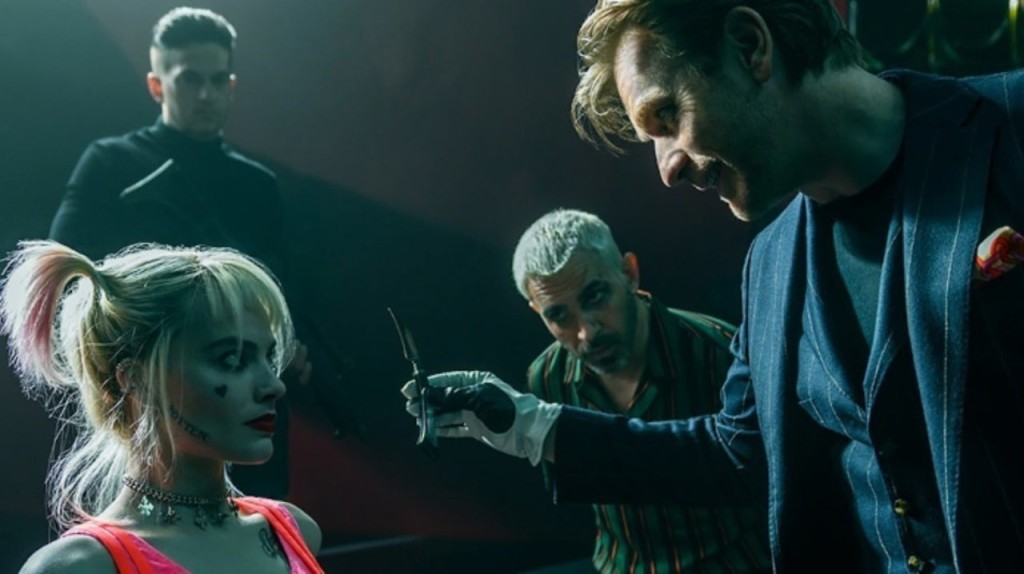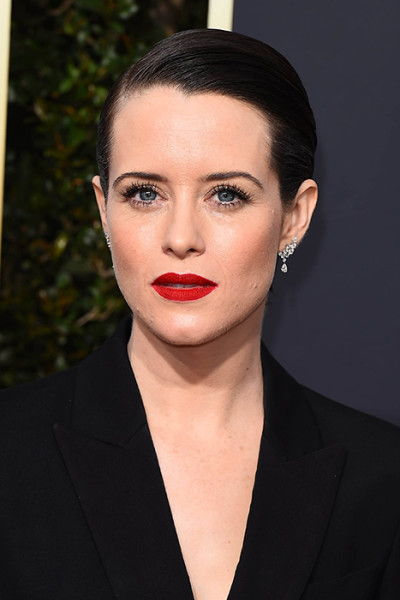Search Results for: the wall
Genre: Japanese Manga – TV Pilot (One Hour)
Premise: Based on the manga comic, numerous pirates sail the seas in search of the famed treasure known simply as “One Piece.”
About: I’m told One Piece is the most successful selling manga comic in Japanese history. And since only Disney and Sony have superheroes, everyone else needs to find their fantastical subject matter from elsewhere. It was only a matter of time, then, that someone, in this case, Netflix, would take a big-budget chance on a manga comic. And if you’re going to go for it, you have to go big. So of course they have to adapt the best manga of all time.
Writer: Matt Owens (based on One Piece by Eiichiro Oda)
Details: 57 pages
So far, I am yet to understand any Japanese adaptation of anything I’ve ever read or seen that is not horror. The Cowboy Bebop script was indecipherable from a phone book written with sluglines. When the Wachowskis adapted Speed Racer, I stared at the screen in bafflement for 30 minutes before dropping a five ton brick on my remote control power button to make sure I would never risk seeing the film again. For a while, I tried to get into famous Japanese novelist, Haruki Hurakami. I reluctantly traversed past the 200 page mark in a couple of his novels before I realized that there was no point to either of them (I dare anyone to make an argument that IQ84 makes sense). Most recently, I made the mistake of watching the movie, “Your Name,” and found it the most hackneyed simplistic boring piece of cinema that anyone had made that year.
Clearly, the Japanese view storytelling in a different manner from the rest of the world. My theory is that they care more about the animation than the story. And when they do tell stories, they’re not interested in goals or points. It’s more about the experience of the people’s lives. Which is great if you love boredom. But someone’s going to have to explain to me why people like these movies. If you could give me anything I could latch onto to help understand the popularity of this comic and every other Japanese comic or animated film, I’m game to learn. While you do that, I’m going to review One Piece.
One Piece begins with a pirate being marched through the Town of Beginnings on a remote island. This man is brought to an execution platform in the middle of town. The Mayor wants to make an example of him that pirates are bad people. Just as he’s about to be killed, someone in the audience yells out, “Where’s your famous treasure!?” And the pirate says that every treasure he’s ever found was put together into “one piece” and just before he can reveal where this one piece is, they kill him.
This sparks a massive pirate uprising where everyone now wants to be a pirate so they can search for the “One piece.” 12 years later we meet Shanks, a red haired pirate who is the leader of the Red Haired Pirates. While his crew drinks at a bar, a little 7 year old kid named Monkey D. Luffy pleads to be part of Shanks’s crew. Shanks keeps telling him he’s got no shot and to stop bothering him.
While no one’s looking, Luffy eats a weird fruit in Shanks’ storage chest and then – get ready for this – becomes super-stretchy kid. If you hold onto his arm and walk around the room, his arm will follow you, stretching out endlessly. Yeah, that’s what we’re working with here. Shanks is furious that Luffy ate this prized super-powers fruit cause now he can’t sell it. But before he can yell at him, a criminal named Higuma shows up with his crew and start yelling at Shanks’s guys.
While everyone fights, Higuma steals Luffy away and takes him on his boat to… I don’t know what. Yell at him on the sea? But before he can yell, a giant sea monster swallows Higuma whole. Meanwhile, Luffy falls in the water and sinks because – I’m not making this up – the super powers fruit contains a “can’t swim” curse. So Luffy is about to die before Shanks scoops him back up and saves him.
Cut to 10 years later cause, of course, and we meet the beautiful but mean Pirate Avida, who takes special pleasure in yelling at some teenager she found, Koby. Koby wants nothing more than to escape Avida. Lucky for him, he finds Luffy stowing away in one of their barrels! Luffy, who’s now 17, is really brave and determined to find the “one piece.” He tells Koby to stand up to his slave owner so Koby does and then the new BFFs Koby and Luffy go off to look for one piece together! Yay!
Holy Moses kill me now.
All right, so, it became clearer to me why there’s such a disconnect between myself and a lot of these Japanese animated movies/shows. They feel like they were written by a 10 year old boy. I’m not kidding. A kid eats a purple fruit and gains super-stretchy powers. When faced with death by a pirate, a giant sea monster appears and eats the boy’s captor. We also get dialogue like this: “Whatever. I don’t care what powers you have. They’re nothing compared to mine. I’m not gonna let some no- name punk stand in my way.”
This is stuff I would – no hyperbole here – expect to come out of an elementary school writing contest.
Which is too bad because the pilot actually starts strong. With every TV pilot, you want to come in with a scene that grabs the reader/viewer. Even more so than movies. Because in movies, the audience can’t leave. But with TV, the audience can leave any time they want. So to start this with a perp walk through an old island town, then have an execution, only for the executed man to scream out that there’s a treasure to find – that’s the beginning of a good show.
Then, when we get into the bar and Shanks encounters Higuma and we have a good old-fashioned standoff, I was thinking, “This is good so far.” Especially when Shanks backed down. In 99% of these early-script standoffs, they’re used to show the hero getting picked on and then beating the bigger badder guy up so we know he’s awesome. So to go the opposite direction and have Shanks wimp out was a refreshing choice.
I’m thinking, “This could actually be good.” And thennnnnnnn – purple fruit that turns kid into mr. stretchy pants happens. My head literally fell into my lap. I shook it several times. And I thought – yup, now you’re officially a Japanese adaptation.
But it wasn’t just the nonsensical lost-in-translation issues that made this a bad read. On page 28 we get our second large time jump. There is maybe no better indicator that a feature script or a TV pilot script is going to be bad than the double major time jump. We jumped forward 12 years. More story plays out. Then we jump forward 10 years.
First of all, it’s pure laziness. I understand why it was done. You wanted to see the pirate introduce the one-piece. And you wanted to show Luffy get his powers and then also grow up. But if you’re pushing us through multiple time periods to set up your story, you’re not working hard enough. Time jumps destroy the rhythm of the pilot. It’s hard enough to get the rhythm right when there are zero time jumps. So to start and stop your story TWO TIMES in a single pilot, you’re begging the viewer to turn the channel.
It’s the equivalent of that guy at the party who tells the story who keeps stopping and saying, “Oh, I forgot to tell you. That guy who gets the girl? He wasn’t always rich. He once worked at a dry cleaners and he had to work for a long time and save up money… where was I? Oh, right so he gets the girl and he’s about to ask her for her hand in marriage but first he’s got to meet her parents. Oh, I forgot. These parents? They’re from old money. So they grew up in New Orleans…” That’s the rhythm you’re creating when you’re doing double time jumps.
I give these guys props for taking something that’s so specific to its medium and trying to turn it into live action. I honestly don’t know how you even start to go about executing a goofy manga in live-action form. Something tells me you’re going to get a mix between the 1980 Robert Altman version of Popeye and the first Sonic The Hedgehog trailer. But we’re in a content-desperate industry and that means more chances need to be taken. We’ll see how this one turns out.
[x] What the hell did I just read?
[ ] wasn’t for me
[ ] worth the read
[ ] impressive
[ ] genius
What I learned: I would avoid the scene in your Western, Superhero, Sci-fi, or any combination thereof, where our hero is challenged early on by the bad guy and then the hero kicks his butt. Usually in a bar. I admired One Piece for not doing that. It reminded me that some beats in a story are so common, writers are incapable of visualizing any other option. But these are the story beats you need to question the most! Because these are the moments where you’re best able to show that your script is going to be different from everybody else’s.
While I continue to root for Margot Robbie, a part of me is happy that Birds of Prey underperformed. The message of that film wasn’t one of exclusivity. But it certainly wasn’t inclusive. That word has to work on both ends of the spectrum. So I’m hoping that sends Hollywood a message to give us films that unite us, as opposed to divide us.
A lot of people are saying that if Birds of Prey came out on Valentine’s Day weekend, it would be a totally different box office story. The film is about a breakup so the subject matter was perfect for the holiday. It also used Deadpool as its template. That film changed the game for Valentine’s Day openings, proving that it could offer humongous box office.
I realize now what happened. Birds of Prey got greedy. They thought to themselves, if we open the weekend BEFORE Valentine’s Day, we get that opening weekend money AND we get that big Valentine’s Day Deadpool haul as well. The problem with that strategy was they weren’t able to market the movie as a Valentine’s Day film. Who knows how much of a difference it would’ve made but if the difference was 10 – 15 million dollars, that’s the difference between the trades labeling the film a bust and labeling it a solid opening. And in this town, perception is reality.
I often wonder how big a difference a release date makes. People used to think you couldn’t open an action movie on Valentine’s Day. Then Deadpool came around. Studios supposedly scratch and claw to get one of those big summer slots. But in the summer, all your second weekend box office is swallowed up by the next big shiny blockbuster. So how desirable is one of those weekends really?
James Cameron famously thanked 20th Century Fox for moving Titanic from the summer, where it was originally slated, to a winter holiday opening. The film went on to break every box office record in the book. It begs the question, what if it had opened in the summer? Would it have made way less money? Would the world not have fallen in love with Leonardo DiCaprio?
The box office comeback story of the year may go to Sonic the Hedgehog. That film was dead as a doornail when that first trailer came out. Everyone proclaimed it the single worst animation of a creature’s face in history. In one of the rare instances of Hollywood admitting they were wrong, the director, Jeff Fowler, publicly apologized then had Paramount push the release date back so they could redesign the face. Flash-forward to today and Sonic the Hedgehog had the biggest video game adaptation opening in history with a 4-day holiday haul of $65 million bucks. Which equals its Rotten Tomatoes score. Not bad.
Let’s sit on that for a second. Sonic the Hedgehog is the BIGGEST VIDEO GAME ADAPTATION OPENING EVER. This continues to be one of the bigger curiosities in the movie business. Of all the things that should be a slam-dunk to adapt, you’d think video games would be at the top of the list. They take all their cues from movies anyway. In some cases, they even improve upon them. Go watch a level from Uncharted for proof. And yet they always land in theaters with a big thud. Assassin’s Creed is such a cool movie concept. But the film was unbearable, to the point where it made you retroactively dislike the video game.
I’m not sure what the reason is. My guess is that video games are built on top of flimsy mythology. Lord of the Rings was such an extensively researched world. Everything that came out of it felt solid and believable. That set the stage for a fully-fleshed out adventure. But these video games – all they care about is cool levels. And whatever janky paper-thin backstory helps them get there, that’s good enough for them. So when you extrapolate that out into a story, all the pillars holding up your screenplay are weak and crumbly. Curious what your thoughts are on this.
Speaking of adaptations, Blumhouse underperformed this weekend with their latest film, Fantasy Island. Blumhouse is in an interesting place at the moment. They blew up because they elevated the most reliable money-making formula in Hollywood – make horror films cheaply. Before Blumhouse, a lot of low-budget horror was schlocky and cheap looking. Blumhouse gave their movies a slightly shinier production design which allowed them to play in theaters as opposed to going directly to digital.
The problem with that is, it’s an easy formula to copy. There’s nothing proprietary about what they do (for example, nobody else can make Marvel movies but Disney – you can’t replicate that). This has allowed other horror movies to eat into their market share. Lights Out. A Quiet Place. Hereditary. The only thing keeping Blumhouse above these production houses is the fact that they make so many films. This allows them to take more chances and increases the odds that one of the movies breaks through and becomes a media darling, like Get Out.
Jason Blum knows this so he’s trying to innovate and take the next step forward that no one else is thinking of. This weekend, he adapted a successful TV show in “Fantasy Island,” but instead of staying true to the material, he put a horror slant on it. That was the innovation. I don’t know what their projections were but I know they were hoping for more than 14 million for the 4-day weekend.
I actually like this idea. Any “stuck on an island” horror concept has potential. And I liked the irony of characters stepping into what they believed was a fantasy, only for it to become a nightmare. But it just didn’t capture the public’s interest. The problem when you open things up in the horror world – when you try to be bigger – is it becomes more apparent that you’re in over your head. Audiences don’t think about the lack of production value when an entire haunted house movie takes place inside the house because it’s organic to the concept. But when you start incorporating more space, more sets, bigger shots, additional characters, we can see where you don’t size up with the Marvels, DCs and Fasts and Furiouses of the world. It’s almost like by going bigger you actually look smaller.
On the plus side, Blumhouse still has The Hunt, which is finally being released. I’m curious to see how this does. They’ll be able to sell it as “the movie they wouldn’t let you see!’ And what gets people more interested in something than being told they can’t see it? What’s your prediction on The Hunt? I think it could open in the $25-30 million dollar range assuming they open wide (3000 theaters). But they might do one of those “feeler” releases (800 theaters), in which case I have no idea how much it’ll make.
A movie that continues to impress me is 1917, which has been around for 8(!) weeks and pulled in another 8 million dollars this weekend. I’m learning a lot from this film. There’s this giant potential audience of History Channel geeks – people who watch shows like “Hitler’s Bunker” and “World War 2 in color” who are dying for a larger-than-life version of what they get in those shows. Because History Channel shows have relatively low budgets. They can only do so much. So if you promise them something that’s just like those shows but bigger and more expensive with great production value, they’ll leave their houses and pay for it. 1917 proves that.
Another thing this movie’s taught me is to look for fun angles in war movies. I don’t mean fun as in “comedic.” I mean using war movies as a ride as opposed to being big glorified dramas. War films are traditionally downers. I mean, it’s war. Lots of people are getting killed. So there’s a dire tone tugging at most of these films. If you can find a way to make a war movie fun, that’s a huge advantage because people generally go to the movies to have fun and feel good.
That’s why these Oscar movies, despite getting endless advertising, often struggle to make money at the box office. Audiences know that it’s not going to be a traditional “fun” experience. The way 1917 became fun was by condensing the timeframe.
I’ve been telling you this for years. One of the easiest ways to supercharge an idea is to create a condensed timeframe. An idea that feels tired and played out can all of a sudden seem fresh and exciting if the right timeframe is applied. Where writers make the mistake is to apply this advice to the usual suspects – pairing it with an action or thriller concept – “A guy’s fake heart is actually a bomb so he’s got to get from the top of a skyscraper to the bottom in 2 hours or everyone in the building dies.” But, actually, where a tight timeframe stands out is when it’s paired with a non-traditional concept. When we think of World War 1, we don’t think of narratives taking place in less than 24 hours. That’s what helped 1917 stand out. You can apply this to any non-traditional setup. A Western. A drama. A romantic-comedy. Just in my head right now, that sounds exciting. A romantic comedy told in a single day.
As for the rest of the box office, I’m shocked to see that Jumanji crossed the 300 million dollar mark. I didn’t think anyone saw that movie due to the risky but ultimately failed choice to have The Rock and Kevin Hart mimic a couple of old men for two hours. Parasite got a small bump from its Oscar win and it’s cool to see Bong Joon-ho celebrate his most successful movie ever. Finally, in what can only be titled “The Ultimate Revenge,” Star Wars Episode 9 fell out of the top 10 to number 15, whereas Rian Johnson’s Knives Out has now pulled ahead of it, taking the number 12 spot. Why is this significant? Because Rise of Skywalker has been out for 8 weeks whereas Knives Out has been out for 11! Does this mean that Rian Johnson was right to kill Luke Skywalker all along? Should every movie from here on forward subvert expectations? Are Rey’s parents’ nobodies? I have to revaluate everything!!!
Genre: Comic Book
Premise: Harley Quinn tries to figure life out after the Joker dumps her and gets caught up in a diamond theft that ignites Gotham’s newest baddie, Black Mask, to try and kill her.
About: Harley Quinn was projected to make 45-55 million dollars this weekend. That was down from the projections Warner Brothers had when making the movie, which were closer to the 75-85 million dollar range. Sadly, the film finished with a measly 33 million bucks and is considered a full-blown box office disaster.
Writers: Christina Hodson
Details: 110 minutes
Harley Quinn.
I’m not here to dance on this movie’s grave. A lot of people worked on this film and, unlike a lot of movies that come out of this town, these people really cared. It’s said that there was a woman heading up every major department in the film. And all of them felt they had something to prove.
Nobody was more determined to make Harley Quinn work than its star and producer, Margot Robbie. I saw an interview where Margot was asked what her favorite Harley Quinn tattoo was and she didn’t skip a beat, going into an extensive explanation about Harley’s first tattoo and how she got it and what it meant to her. All I could think was, “Wow, Margot really cares about this character.”
Unfortunately, somewhere along the way of this film’s development, they decided to embrace an anti-male slant. In retrospect, I guess this makes sense. The movie was being written and prepped during that rabid six month stretch where everyone thought Twitter was real life and if you were Caucasian and had an xy chromosome, you were the devil incarnate.
The first white man to enter this story is a drooling bald-headed creepy pet salesman who says he accepts sex for payment. Harley feeds him to her hyena. The next white man is an a-hole who calls Harley a slut. Harley breaks his legs. The next four white men introduced are gunned down while eating dinner by the Huntress. They don’t even have time to protest their death. The next two white men introduced try to rape Harley after a long night out.
Put simply, if you are white and a man in the Harley Quinn universe, it ain’t going to end well.
Finally, about 15 minutes into the film, we see that Harley has one Caucasian male friend – the cook who makes her daily greasy egg sandwich. The two are smiling and jovial. I thought, okay, I’m glad they’re at least portraying one white guy as cool. And then as Harley’s leaving, her voice over reveals that the man is Armenian.
Look, anybody can make any movie they want. If you want to portray an entire demographic in a negative light, you are well within your rights to do so. It’s art. It has no rules. However, you have to then be accepting when the demographic you’re destroying has no interest in seeing your movie. I mean who wants to spend two hours being told that people who like you are bad?
I guess I’m surprised because it’s such an odd business choice. You’re hating on the demographic that spends the most time in movie theaters. It’s weird. Why didn’t somebody come in and say something? “Maybe we should be inclusive and positive about all races and genders?” In the immortal words of Dana Carvey as George Bush: “Neht gunna dew it.”
Eventually, a movie emerged out of this. Sorta. The plot follows Harley Quinn as she’s coming out of a bad breakup with the Joker. The film shamelessly attempts to be this year’s Deadpool, with Harley Quinn bee-bopping her way through an endless “listen to how clever I am” voice over narration, all of which could’ve been distilled down to a single sentence (“The Joker and I broke up.”).
The plot then decides to take a bathroom break, forcing the audience and the characters to wait around for him. In the meantime we learn something about mobsters in Gotham and that someone’s going around shooting people. None of it ties into anything that you would call “relevant” but we do meet club owner Black Mask, played by the only person who comes out of this movie unscathed, Ewan McGregor. He has a few funny lines.
Finally, after a good twenty minutes, the plot waltzes back in the room with a theatrical, “fiiiiiiiiiine!” and gives us some direction. A young Korean pickpocket girl inadvertently lifts a million dollar diamond off of Black Mask’s second-in-command and Black Mask, who has captured and is about to kill Harley Quinn, for some reason hires her to go after the girl and get the diamond back.
Harley finally finds the girl, who by this point has swallowed the diamond. This means Harley can’t turn her in until the diamond passes through her system. So Harley takes her back to her hideout where, within the span of five minutes, she becomes best friends with the girl, and now she’s not so sure she wants to give the diamond or the girl up to Black Mask. Unfortunately, that doesn’t matter because Black Mask is coming to get them.
I wish I had anything good to say about this movie.
But I don’t.
Most of the badness here is baked into the script itself.
The narrative is uber-weak. It’s Harley Quinn whining for half an hour about I don’t even know what. Then, out of nowhere, a random girl steals a diamond, a diamond we only learned about two minutes prior, and then everybody is after the diamond and that’s the plot. I bring up the fact that we only learned about the diamond two minutes prior because it shows how low the stakes are in this movie. The thing everyone is after had zero significance in the audiences’ eyes. The only reason it exists is to engineer some semblance of a plot.
Then there are all these little things that conveyed how amateurish the writing was. At one point, in the middle of the first act, Harley’s getting beat up, and, while talking to us in voice over, says, “In the storytelling world, this device is known as a complication.”
Um, no it isn’t.
A complication requires that your character have an objective to complicate. At this point in the story, there is no goal. Nobody is after anything. It was just Harley Quinn rambling in voice over while we meet a bunch of people we’d later learn had nothing to do with the story. So if you’re going to try and be clever and fourth-wall breaking and bring up screenwriting vocabulary, you might want to actually learn what the device is you’re talking about.
But there’s a much bigger problem at the heart of this movie and it’s something I’ve been asking ever since it was announced that Harley Quinn would get her own movie. What is it that Harley Quinn DOES? What makes her special? In other words, why does she deserve her own movie? I spent two hours with this character this weekend and I still can’t answer that question. As far I can tell, she’s just some loudmouthed eccentric person who likes to play dress up. What is it about that that makes someone think she deserves her own movie? I don’t get it.
And then there was the directing, which vacillated between generic and extra generic. The action scenes felt like the director was learning on the job. Many sequences came across as if the crew ran out of time and had to stick in a bunch of those garden-variety stunt moves you can see in a thousand 1985 B-action movies. There were occasional flashes of inspiration, like a couple of shots where Harley beats someone up with a bat. But they’d be surrounded by tons of locked down wide-angle shots that any second year film school student at USC could’ve pulled off. Where is the vision here? Where is the specialness that separates the good directors from the wannabes – that makes you say, “Oh, I understand why this director got the job over everyone else.” Cause those qualities were not evident in the finished product.
This was a misfire on every level.
And the problems started at the conception stage. Nobody ever asked the question, “What makes this character special?” You then coupled that with an aggressive campaign to exclude a group of people. So should you really be surprised that no one showed up to your movie? Maybe there are a few lessons to learn from this if the people involved are willing to have honest conversations with themselves.
If you’re looking to watch a good female-driven movie this week, go to Netflix instead and watch Horse Girl. It’s weird and trippy and unique and it doesn’t try to paint any one demographic as bad.
Finally, props to the two screenwriting Oscar winners this year. The Academy got it right! JoJo Rabbit and Parasite were my top two favorite screenplays of the year!
[x] What the hell did I just watch?
[ ] wasn’t for me
[ ] worth the price of admission
[ ] impressive
[ ] genius
What I learned: Make sure your title and your movie line up. I know this seems obvious. But it’s a mistake I encounter fairly often. And it happened with today’s film. This movie is titled “Birds of Prey,” but it’s not about this “group” known as the Birds of Prey at all. They’re barely in the movie. This movie is 98% Harley Quinn doing Harley Quinn stuff. Have the title reflect that.
Genre: Thriller
Premise: Trapped at a three day personal development retreat, a woman fights to save her husband and herself from being brainwashed by a charismatic self-help guru.
About: This script finished with 10 votes on this past year’s Black List. The writer is repped at Verve.
Writer: Levin Menekse
Details: 107 pages
Despite all the great entertainment options out there, there’s still nothing quite like reading a good script. Something that sucks you in and never allows you to disengage. That’s the power of good writing.
To that end, I owe today’s experience to you guys. I saw a few of you fawning over this in the comments section and I had to see what all the fuss was about. As it turns out, the subject matter was right up my alley. A cult movie? But not the obvious kind (people in white robes saying weird s%#@ and secretly trying to kill you). The much more sinister kind. Cults dressed up like a self-help organization. Where is the line between genuine self-discovery and manipulation? That’s what today’s script asks. And the answer is splendid.
38 year old lawyer Kirsa Rein finds herself somewhere outside of Los Angeles at a big bland gray building with her 31 year old husband, Peter. Kirsa is trying to make partner at her firm and recently her boss came to this Tony Robbins on steroids retreat called “The Process” which is able to transform you into your bigger better self within three days. Peter is begging Kirsa to ditch the sketch-fest in the last minutes before entering the drab building but she thinks it’s gong to be great.
Famous last words.
Once inside, they’re treated to their first lecture by Aiden Caul, a big intense dude who’s equal parts terrifying and charming. Aiden starts screaming at everyone that this isn’t going to be easy but it’ll be a lot easier if everyone’s honest. Immediately he calls on Kirsa to give her initial impressions on the event but whatever she says, he’s not buying it. This is a woman who’s gotten straight A’s her whole life. Immediately, she’s on the teacher’s s%@$ list.
Afterwards, she meets up with Peter, who’s laughing it up with one of the volunteers, Maya. One of the gorgeous volunteers, Kirsa notices. Hmm, this isn’t going to be anything like she thought. The men and women are separated into different rooms and when Kirsa wakes up, her anti-depressant medication has been taken from her suitcase. She freaks out and yells at the volunteers, which only results in everyone hating her more.
Peter gets called up on stage at the next lecture where Aiden meticulously dresses him down. He starts asking Peter if he’s happy with his life. If he’s happy with his career. If he’s happy with his marriage. At first Peter says, yes, he’s very happy. But Aiden keeps pushing him. Again, the process isn’t a place for bulls@%#. It’s a place for truth. So Peter starts giving him the real answers, starts having real breakthroughs. It’s at this point where Kirsa realizes that this is no longer about getting a promotion. It’s about breaking her husband out of here before he’s fully brainwashed. The question is, will Peter want to go with her?
So there are two ways I recommend starting a spec. Notice I’m saying “spec” here. Not every script. Spec scripts. I use that distinction because people reading specs have zero faith that they’re going to be good. Under those conditions, option 1 is to give us a mysterious situation right out of the gate. This creates a sense of mystery which compels the reader to read on.
Option 2 is to give the reader a familiar situation but to spin it in a way that we’re not expecting. A good example would be The Matrix. A team of cops go to arrest a woman in a building and all of a sudden she starts running on walls and leaping over buildings.
Of these two options, I like number 1 better. I like the opening of It Follows. A young woman runs out of a house and keeps looking back at something chasing her but there’s nothing chasing her. If I’m reading that script, I will definitely keep reading to find out what the heck is going on.
The Process goes with Option 1 in a subtler way, but nonetheless just as effective. We start in this large gray room with no windows. It is populated by half a dozen “volunteers” in unisex uniforms, all staring forward, silent. We don’t know what “volunteers” are yet. We then move out of the room down a long gray hallway, “swallowed into the bowels of an endless building.” Immediately I want to know where I am and what’s going on. These may seem like simple questions but these are questions readers will want answered and therefore keep reading to find out.
All of this took place in one page and already I’m curious to find out more. Remember, your goal when writing scripts is never to impress the reader. Your only job is to make them want to keep turning pages. So give us some questions we want answered right away and we’ll keep turning the pages.
The mystery behind exactly what this place is drives the first 15 pages of the story. And by that point, we’ve gotten to know our couple, Peter and Kirsa. Injecting a couple into this scenario as opposed to an individual was a stroke of genius. Because now it isn’t just about, “How evil is this guru and to what extremes is he willing to go?” It’s “Is this couple going to survive this process?”
This is something I wish I could tattoo onto every screenwriter’s forearm. The cool hook gets us in the door. But it’s what’s going on with the characters that keeps us there. And you have choices in that department. You can just explore what’s going on internally with a character, like Arthur in Joker. Or you can build the exploration around a relationship (marriage, parent-kid, best friends), which I find to be more fun because it’s easier to play with conflict and tension and flaws when two characters can talk about it. When you’re only exploring a character internally, their flaw needs to be actionable to resonate. For example, the flaw of greed is an actionable flaw because there’s lots of ways to show your hero being greedy.
But there are so many more scenes you can write when you’re exploring a relationship and that’s where this script shines. It has a “THAT” scene that explores marriage as intensely as I’ve ever seen. Remember what “THAT” scenes are. They’re big memorable scenes that everyone is going to be talking about after the movie. If you have a below-average script but you have a THAT scene? It’s worth it to keep rewriting your script until you get it right because THAT scenes are indicative of a concept that has potential. You can’t write one of these scenes off a bad idea.
The scene in question is when Aiden takes Peter up on stage and starts asking him if he’s happy with his life. Out in the crowd, we occasionally cut to Kirsa’s reaction to Aiden’s questioning. It’s an amazing scene because Aiden is so blunt at laying out how bad Peter’s life is. Peter is finally confronting this reality. And Kirsa is watching it all unfold helplessly from her seat and terrified with how much further it’s going to go. There is a genuine possibility that by the end of their interaction, he might want to leave her. Talk about a high stakes moment.
There are a lot of strong choices in this script. For example, the reason they’re here is because Kirsa’s boss at the law firm, who also took this course, recommended she do so as well. Kirsa is determined to make partner. So it’s imperative she make her boss happy. This gets rid of the question that is often asked in movies like these: Why don’t they just leave? If things are getting out of control, why wouldn’t they leave? And that’s why. Because she knows if she goes back a failure, she’ll never get that promotion.
The thing that pushed this script over the edge for me was the character of Aiden. He could’ve been a one-dimensional bully. But there’s a lot here he says that makes sense. When he’s challenging people to confront their lives and if they’re happy and if they’ve been lying to themselves, it rings true. And it’s when you have those conflicted feelings as a reader, where you can’t hate the bad guy straight out, that make for a more introspective conflicted read. You don’t want to be feeling this way but you are, and it slyly pulls you into a deeper realm of the story. It’s almost like you have to keep reading to confirm that this guy is bad so that you don’t feel bad yourself about agreeing with him on some things.
This was a perfect mid-week read. And a very financially doable movie. This is exactly the quality of storytelling I’m looking for in The Last Great Screenwriting Contest.
[ ] What the hell did I just read?
[ ] wasn’t for me
[ ] worth the read
[x] impressive
[ ] genius
What I learned: There are pivot moments where the previous reasoning for something no longer makes sense because of a plot development. When those moments happen, you have to up the reasoning to reflect the new reality. So earlier I said the reason they don’t just leave is because she doesn’t want to go back to her boss and say she didn’t finish the program. However, when Aiden starts destroying her marriage, that logic doesn’t work anymore. You need another reason they stay. So what The Process does is, by that point, Peter is a convert. He believes in what Aiden is saying. So he doesn’t want to leave. This forces Kirsa to stay to try and rescue her husband.
Genre: Action
Premise: When a talented hacker is recruited by the mysterious Cicada 3301, she gets wrapped up in a plot that threatens to destroy the entire world. Based on the real organization.
About: This script finished number 4 on the 2019 Black List. The writer of the script, Lillian Yu, made last year’s Hit List with her script, Singles Day.
Writer: Lillian Yu
Details: 108 pages
One of the reasons it’s so hard to make hacker movies work is because there aren’t a lot of ways to make typing on a computer interesting. Even with the fancy graphics, it’s a bit like chronicling the life of a famous writer. The act of writing is boring to watch, just as the act of hacking is boring to watch. I found this out the hard way a long time ago when I wrote a hacker script. No matter how cool I tried to make the hacking process, it always came back to my hero sitting in front of a screen pounding buttons. I could never figure it out.
The more interesting approach is probably to have your hero be operating in the real world and your villain be the one who’s the hacker. That way, they’re controlling the elements around you and you have to constantly adjust. I think The Net, with Sandra Bullock, took this approach. Enemy of the State as well. And probably some recent movies that I’m forgetting. So how does Yu solve this problem? Let’s find out.
Jane is a computer genius, so much so that she got a full-ride to Harvard. Jane is also a bit of a social justice warrior, and when she tries to expose one of Harvard’s premiere fraternities for covering up sexual assault, she finds out that Harvard is more interested in keeping up its pristine image than being Ronan Farrow’s next expose. So Jane is kicked out of school.
She eventually gets a crappy job at an insurance company where she secretly retroactively adjusts policies so that poor people don’t get screwed over. This catches the eye of a secret organization known as Cicada who recruits Jane to be a member. She’s flown to Paris via a remotely controlled airplane, passes a bunch of a tests, then meets the team, which is basically a techno-savvy version of the Mission Impossible group.
The leader, Adam, explains that Cicada is an organization whose sole job is to do right in the world. For example, there’s a guy running a Ponzi scheme 10x worse than Madoff. Cicada digitally transfers all that money back to its rightful owners. All in the background.
The problem is there’s another organization called Zero whose mission is the same as Cicada’s. To save the world. Except their business plan has gone awry recently and their current plan is to infuse North Korea with trillions of dollars so it can launch a nuclear war against the world. All of this is happening at the end of the month, so they need to act now.
There’s a major gathering of the most influential people in the world at a castle and the head of Zero is going to be there. They need to get there and kill the guy. Unfortunately, hacking isn’t going to be enough to do the job. So Jane must go through action training to get her up to speed in hand to hand combat and shooting peeps in the face. She barely passes and off they go.
Everything at the castle goes cleanly at first, but then Jane runs into a Zero member, who informs her that Cicada is lying to her. That she was recruited specifically to be the fall guy when all of this hits the press. Unsure of who to believe, Jane must decide who to align herself with, the company who recruited her, or the apparent enemy.
One of the best ways to convey a script read is to take people inside the mind of the reader as they were reading. Which is what I’m going to do here. The first thing I noticed about this script was that the writing was strong. There was a vibrancy and energy to it that was exciting. The description, in particular, was a cut above what I usually see.
So I was excited. However, I then ran into my first issue with the script. The main character was really angry at the world. And angry main characters rarely work. It’s hard to root for them, plain and simple. Whenever you’re unsure of what you can get away with with your main character, just imagine them in real life. Do you like angry people in real life? I don’t. Most people don’t. So that’s probably not going to work as a main character. It can work with a side character since they don’t need our emotional investment. But it’s a major risk when you’re doing it with the hero.
I think Yu sensed this and, therefore, gave Jane a couple of save the cat moments. Her mom dies. And she helps a wronged insurance customer get their money back. This can sometimes work to balance the character out. But only if the implementation is invisible. I saw these moments for what they were – attempts to get us to like the character. Once we see the hand of the writer writing, we know we’re being manipulated.
Regarding the problem I brought up in the intro, Yu made the wise decision to train Jane in more than computer hacking. She’s taught how to kill and fight and drive which allows her to get into more interesting situations in the big set pieces. The issue there was that it wasn’t believable. She’s trained to be an action star in a week.
This is a common problem in these “ordinary hero thrust into extraordinary situation” movies and writers have developed all sorts of tricks to make the leap passable. For example, in the movie Wanted, didn’t James McAvoy’s character have a father who was special and therefore he’d inherited special abilities as well? He just needed someone to open them up?
To this day, the best movie that’s ever done this is The Matrix. It was instantly believable that a nobody who doesn’t know how to fight could fight like a master since when you’re in a computer system, any skill can be uploaded into you. It’s one of the many reasons that movie was a classic (Matrix 4 coming, baby!).
But the biggest problem with this script is that 75 pages into it, I stopped and thought to myself, “I know I’ve read this somewhere before.” I went into my archives, did some research, but eventually realized that, no, I hadn’t read it before. It was that the script’s beats were so familiar, it just FELT like something I’d read before. And that’s where I mentally gave up on the script.
A few of you have indicated I should add a “Is this produceable” section to my reviews since I’m moving into producing. It’s a great question with this script. Because it feels like a movie. But if I’m going to produce something, I’m looking for some element that’s unique enough to make the film stand out amongst the crowd. And I didn’t feel that here. This is very much Mission Impossible meets James Bond. A few years ago, the female lead might’ve helped it stand out. But now everyone’s writing female action leads.
Then again, who knows. John Wick was the most generic action movie plot ever. A retired assassin comes back to kill a bunch of bad Russians. And after the Action Showdown Contest, one of the conclusions we came to was that it’s really hard to make an original action movie. So I suppose the answer to this question is in the eye of the beholder. We’ll have to see what happens.
[ ] What the hell did I just read?
[x] wasn’t for me
[ ] worth the read
[ ] impressive
[ ] genius
What I learned: When writing hacking scenes, avoid a bunch of character + computer screen gobbledy-gook that sounds like hacking. Stuff like, “Did you close down the firewall?” “I’m still trying to find out if he’s using a password sniffer!” In my experience, that stuff never works. Instead, you need to create a situation – preferably something visual – that the reader can understand. Maybe this isn’t the best example, but in The Social Network, instead of Mark Zuckerberg writing some weird techy hacky program in real time, Sorkin had him competing against six other people in a circle of computers in the midst of a drinking contest. That’s always going to work better than literal lines of code.

